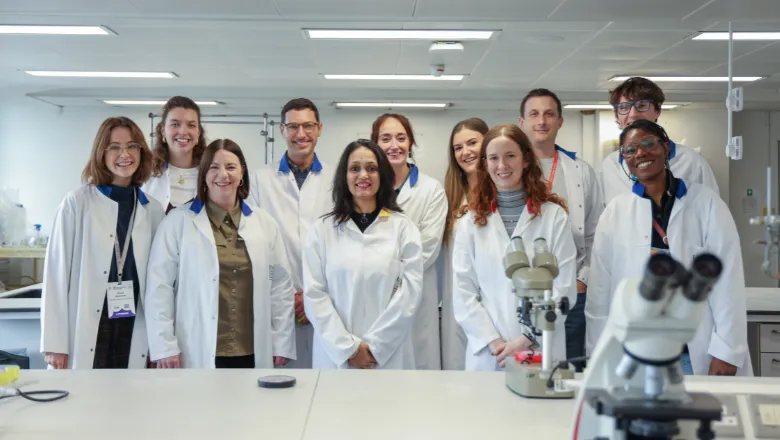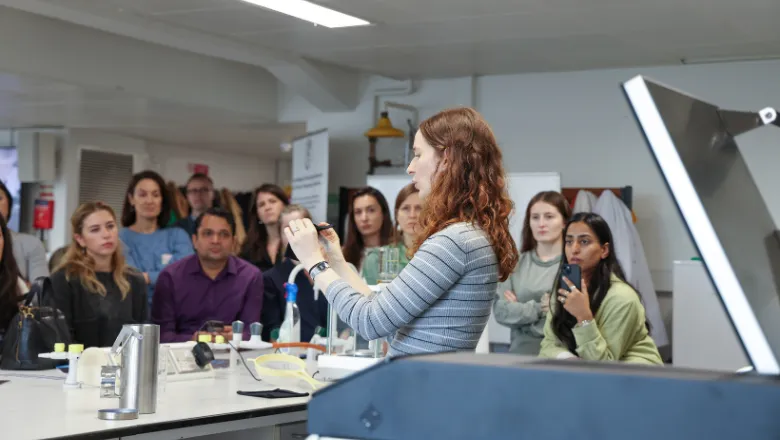King's has hosted the UK's public first demonstration of fibre fragmentation, highlighting the extent to which textile fibres shed from fabric during a domestic laundry cycle.

Sustainability professionals from across the textile and fashion industries learned about how fibres fragment during washing, how this is measured, and its potential environmental impact at a demonstration in King's Franklin Wilkin's Building.
Organised by The Microfibre Consortium (TMC), over 40 delegates watched a special machine, called a "gyrowash", clean fabric during a simulated laundry cycle. They then learned about the TMC Test Method, which can be used to measure textile fibres released from simulated domestic laundering. The event took place as part of the Textile Exchange Conference.
Academics from across the IMPACT+ network - a collaborative project seeking to understand how the sustainability of the fashion industry is measured - then explained how the environmental impact of fibres, in this context referred to as "microfibres", fly under the radar as they are not currently considered in any lifecycle assessments.
The demonstration also shone a spotlight on the potentially harmful role of natural fibres, such as cotton and wool. These natural fibres have long been deemed more sustainable, while much of the focus has been on mitigating the impact of microplastics, which break down from synthetic fibres. However, hundreds to thousands of individual natural fibres can shed during a single wash, with many of these subsequently released into the environment via wastewater, soil and air.

According to Dr Matteo Gallidabino, Lecturer in Forensic Chemistry at King's Forensics and specialising in data mining and modelling using machine learning approaches, natural fibres could present as much damage to the environment as synthetic fibres.
Many people in the textile and fashion industry are not completely aware of the shedding potential of garments made from natural fibres. Following the currently high concern in environmental sciences on microplastics, the general perception is that synthetic fibres (such as acrylic and nylon) are the main issue. However, garments made from natural fibres can shed a lot too, and more research needs to be done into the assessment of the environmental prevalence and impact of this kind of fibres."
Dr Matteo Gallidabino
While little research has been done into the impact of natural fibres, potential problems include physical obstructions in living organisms, such as fish, as well as other toxicological effects from harmful chemicals that can be used in the production of the fibres (like dyes) or be absorbed by them later. All of these consequences may be particularly damaging for aquatic ecosystems.
Recent research conducted by King's and Northumbria University revealed that, of all fibre samples collected from the Kenyan and Tanzanian coastlines, more than half contained natural fibres. More insights on the issue have also been presented in a Policy Brief published by King's Water Centre.
Dr Gallidabino is also supporting TMC with their work in investigating the root causes of fibre fragmentation from textiles.







